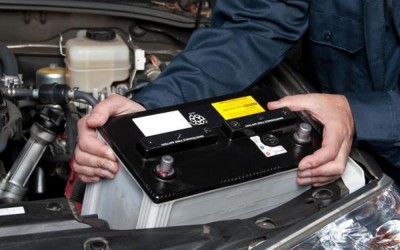
A well maintained battery serves you longer and saves you some bucks
Good battery maintenance helps prolong the battery life saving you a few bucks in the process.
Most of us do not think of our car batteries as something that needs attention, however, most batteries, even the so-called Maintainance free ones need to be inspected regularly. The best time is in the fall, just before the cold weather sets in.
If you’re buying a new battery, go for one with a high reserve capacity, amperage hour rating, and cold-cranking amps. Be sure to buy the correct size battery for your vehicle. It should fit snugly in the battery hold-down clamps. The new battery should have the terminals in the same place as the old ones. Battery cables are usually short and will not stretch to fit a terminal in a new spot. It is best to purchase a maintenance-free battery. Check the condition of the battery hold-downs and battery cables. A cable that is falling apart or cannot be adequately tightened into the terminal should be replaced along with the battery.
Tools/Materials Required:
- Terminal puller
- Wire brush
- Hydro meter/battery tester
- Voltmeter
- Nylon scrub brush
- Battery charger
- Kitchen baster (please do not hand it over to the wife after you’re done with it)
- Distilled water
- Battery cleaner product
- Toothbrush
- Toothpicks
- Rubber gloves
Instructions:
- Unscrew the battery terminals and any hold-downs securing the battery.
- Remove the battery from the vehicle using rubber gloves
- If you have a non-sealed battery, use a Hydro meter/battery tester to measure each cell of the battery. Remove the battery, insert the Hydro meter and suction out a quantity of battery fluid. The Hydro meter will indicate the level of specific gravity or charge (1.25 being a good level; see instructions supplied with your Hydro meter). Write down the number you get for each individual cell if any two cells differ in specific gravity by more than .05, you are probably going to have to replace the battery.
- Take your distilled water and pour slowly to top off the water level in each battery cell ( a kitchen baster is a good tool for this) and then replace the caps.
- If you have a maintenance-free battery, check the voltage using a voltmeter. The voltmeter should indicate at least 12.0 volts. If it does not, recharge the battery.
- Clean the battery with a mixture of baking soda and water if you’re looking for a DIY hack otherwise you could purchase battery cleaning products from your local autoparts store. A nylon brush comes in handy, and you may need to plug any cell vents with toothpicks.
- Flush the case with water, then wipe dry. Removing the surface grime prevents the build-up of path where current can lead between the terminals, slowly discharging the battery.
- Remove each battery cable. Use a terminal puller to avoid having to pry on the battery case, which is easily cracked.
- Wearing rubber gloves, use a wire brush or battery terminal cleaner to remove corrosion from the terminals and clamps.
- Once everything is clean, apply a film of petroleum jelly and reattach the cables. Do not over tighten the cable clamps, as you can crack the case or break the clamps.
- Remove the battery hold-down, remove any corrosion and reinstall.
